- drach09's home page
- Posts
- 2022
- 2020
- June (1)
- 2019
- 2018
- 2017
- 2016
- 2015
- 2014
- December (13)
- November (2)
- October (5)
- September (2)
- August (8)
- July (9)
- June (7)
- May (5)
- April (4)
- March (4)
- February (1)
- January (2)
- 2013
- December (2)
- November (8)
- October (5)
- September (12)
- August (5)
- July (2)
- June (3)
- May (4)
- April (8)
- March (10)
- February (9)
- January (11)
- 2012
- 2011
- October (1)
- My blog
- Post new blog entry
- All blogs
pp+pA Letter of Intent Meeting (April 25, 2014)
During the pp+pA phone call, some questions were raised about the comparison of detector-jets to particle-jets. There was also a question as to why Sivers asymmetries seemed to show points below the expected xF cut-off from the η range and pT requirement. It turns out I made a mistake in how I applied the pT cut in the code. Anselm also found a bug in how the PID is assigned for certain particles. I have updated the code accordingly and post, here, plots of detector-jet asymmetries (closed points) and particle-jet asymmetries (open points).
Figure 1: Collins Asymmetries
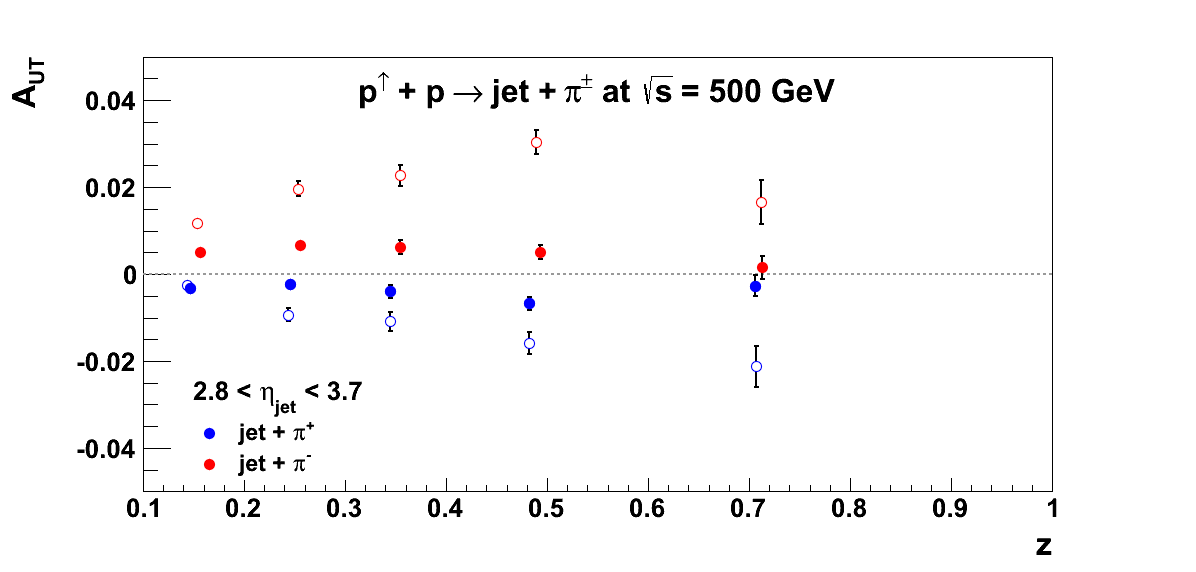
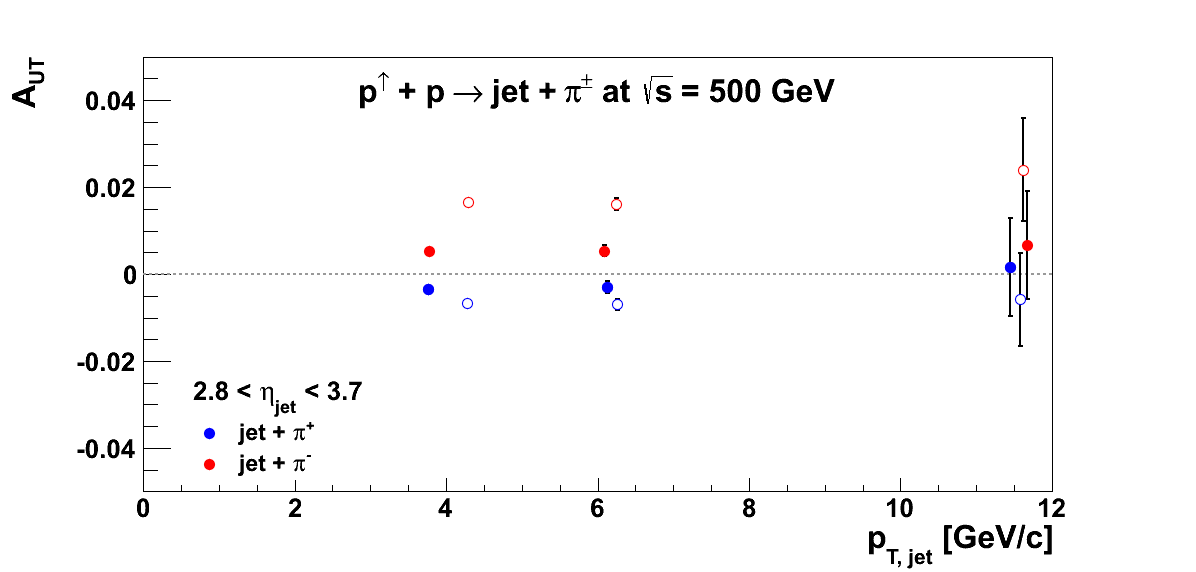
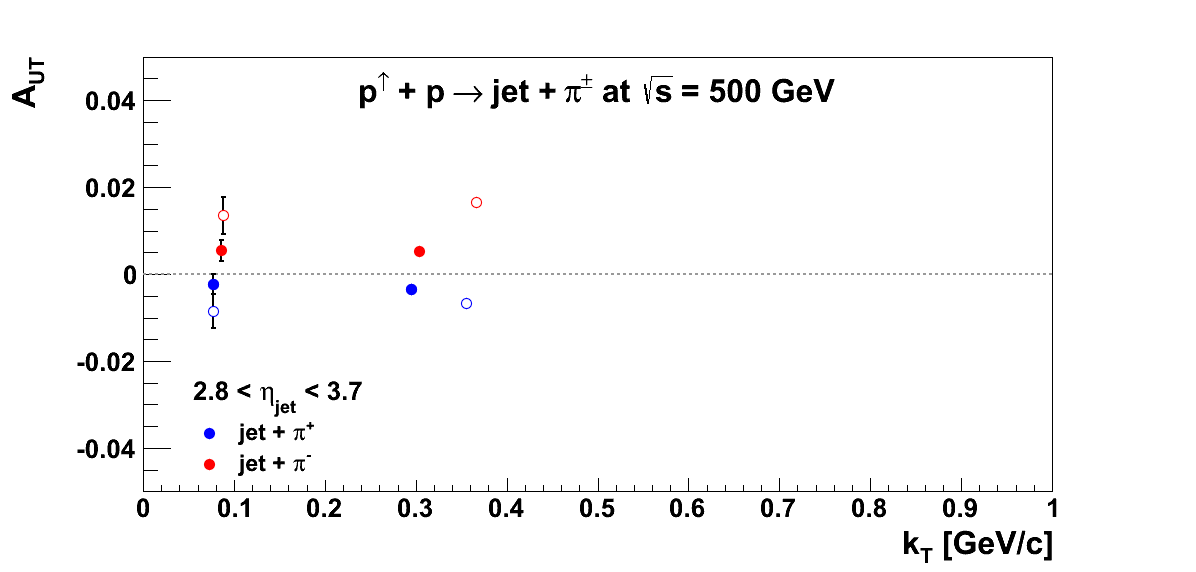
In Fig. 1 I show the Collins asymmetries for detector jets (closed points) and particle jets (open points). One can see there is a substantial difference between the two, in particular, for negatively charged hadrons.
Figure 2: Sivers Asymmetries
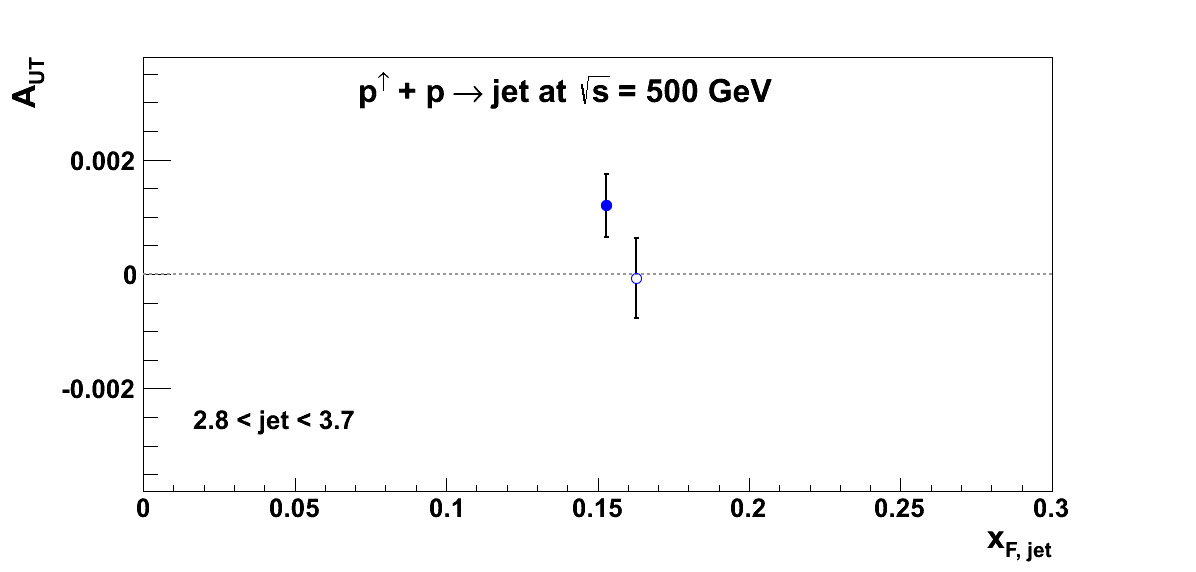
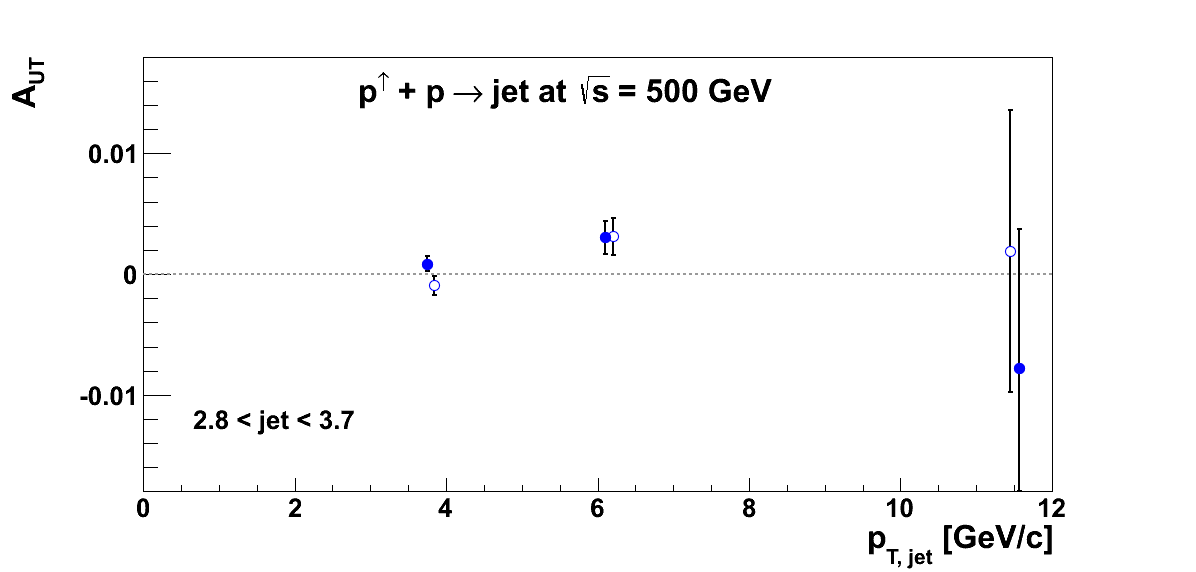
In Fig. 2 I post the Sivers asymmetries. The plots now show the proper pT range. There does not appear to be the large difference between detector jets and particle jets, however, the size of the effects is quite a bit smaller and the statistical significance of the asymmetry greatly reduced relative to the Collins asymmetries.
Figure 3: Collins Asymmetries for Detector Jets with Parton Axis
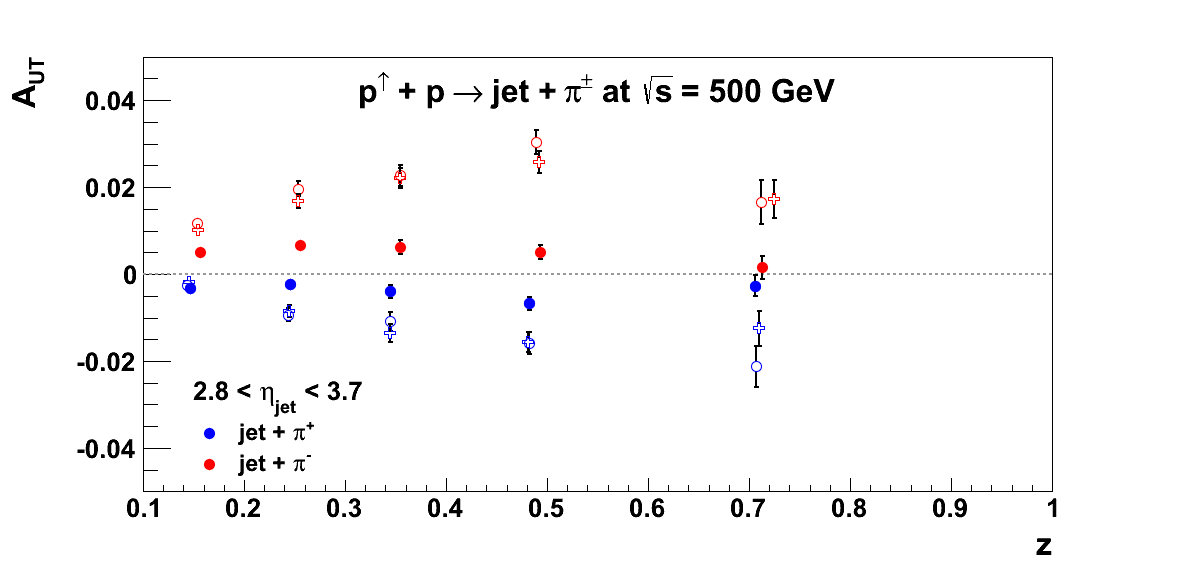

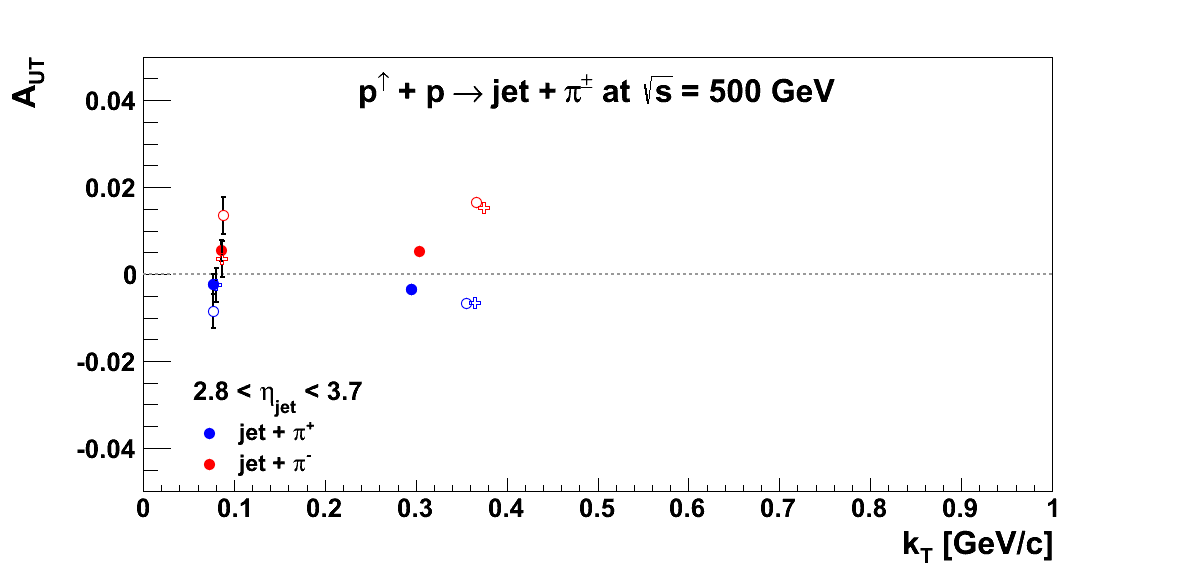
In Fig. 3 I overlay the asymmetries calculated from detector jets using the parton axis for the asymmetry (open crosses). The asymmetries are quite similar in size to the particle jets that utilize the parton axis but with true particles passing through the jet algorithm. Thus, the appearance is that the asymmetry is not largely distorted by smearing or the dilution from the PID. Rather, it appears the asymmetries are largely reduced by switching from the parton axis to the jet axis.
Figure 4: Collins Asymmetries with Perfect PID
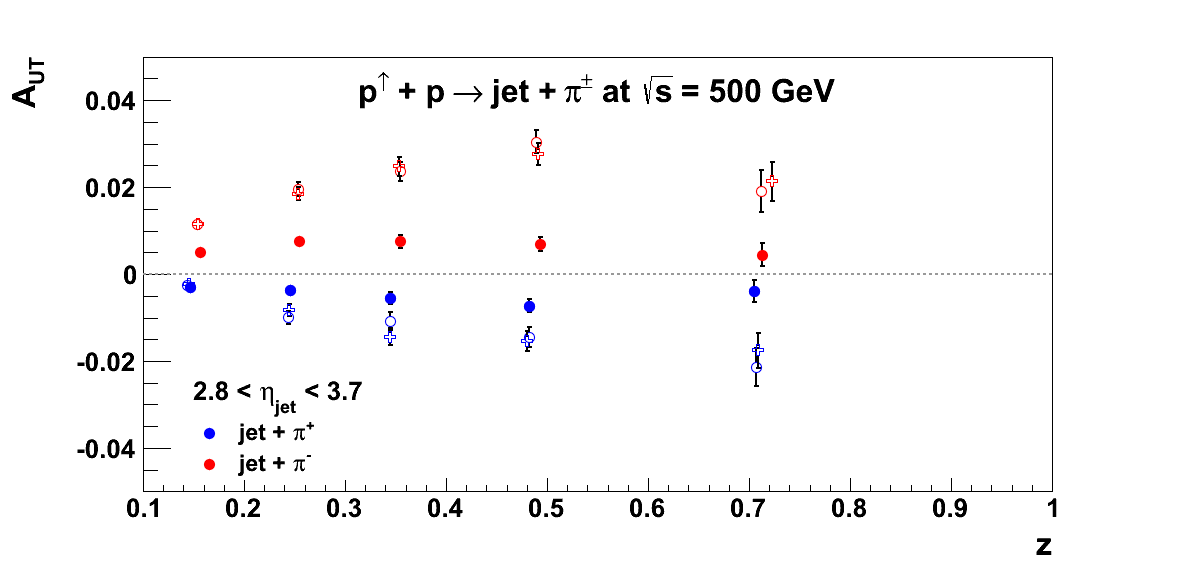
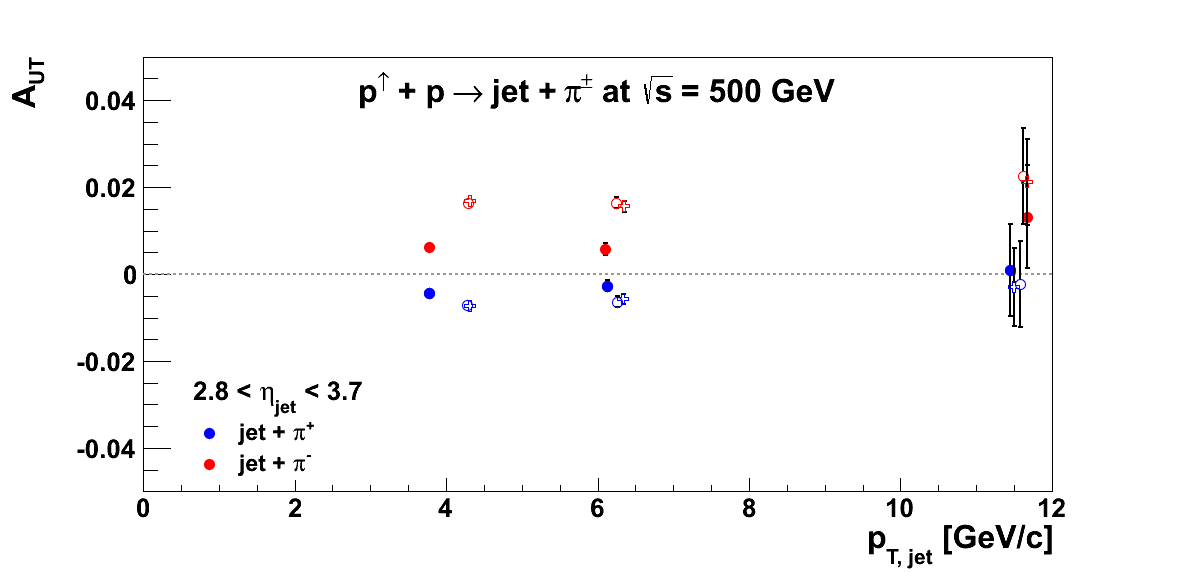
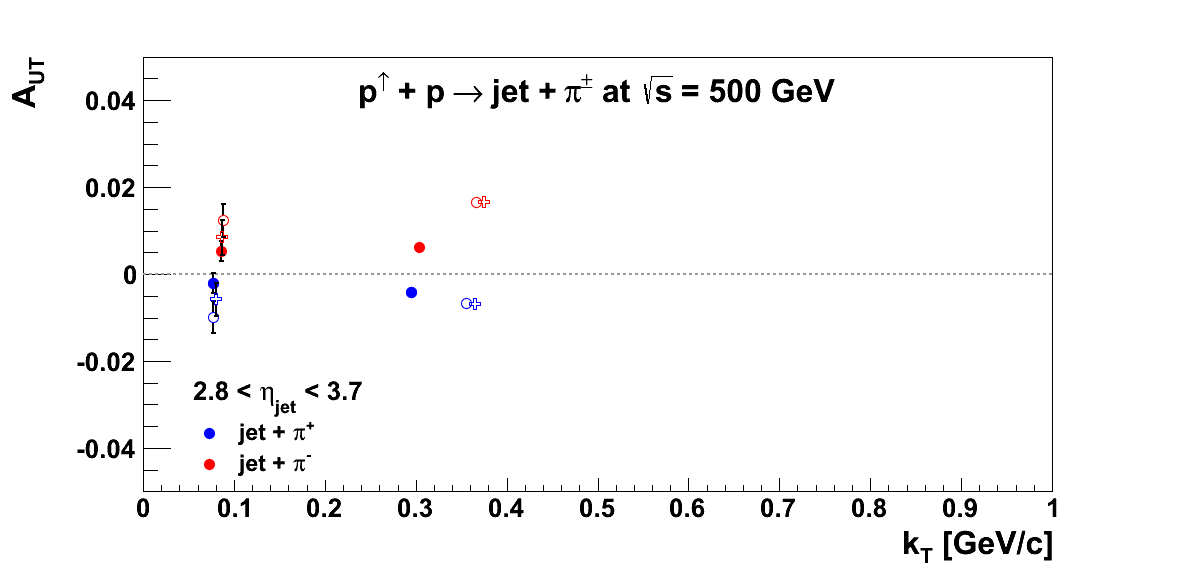
In Fig. 4, I post Collins asymmetries calculated for perfect PID. These are for pions, only. One can see that the dilution of the asymmetries is not due to the lack of PID. Moving from particle jets to detector jets using the parton axis one obtains very similar results. Nearly all of the dilution in the asymmetries is from moving from the parton axis to the jet axis.
Figure 5: Collins Asymmetries with ΔR > 0.1
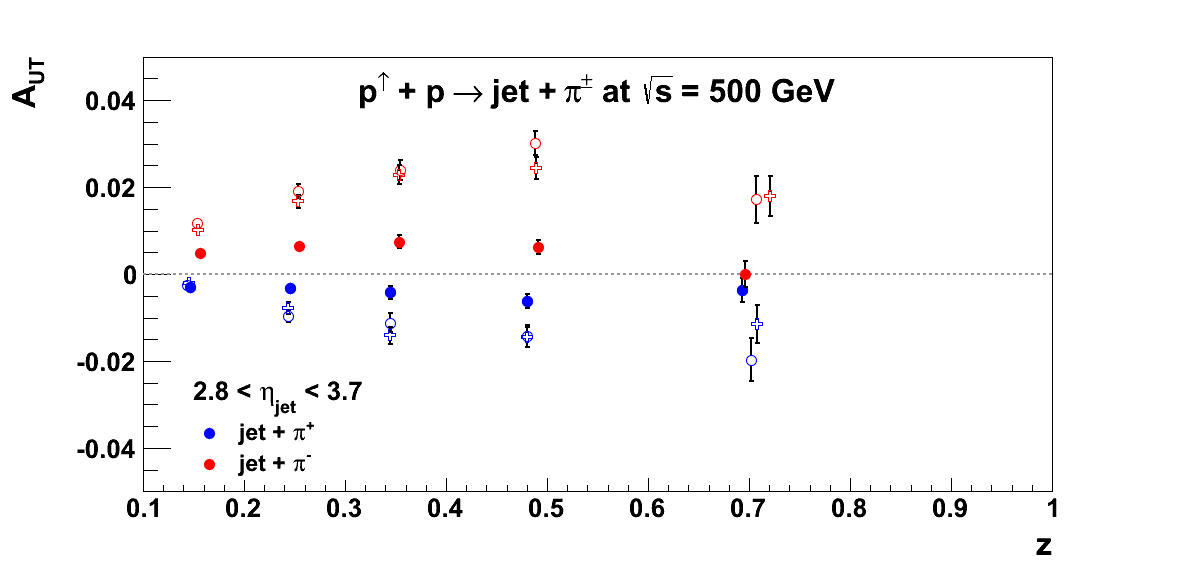
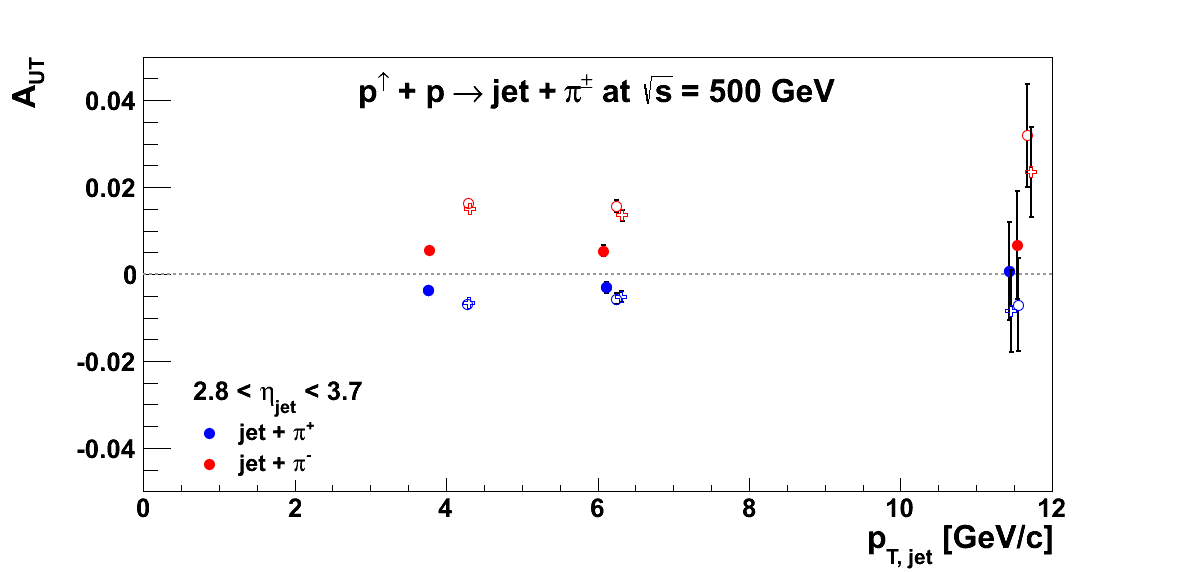
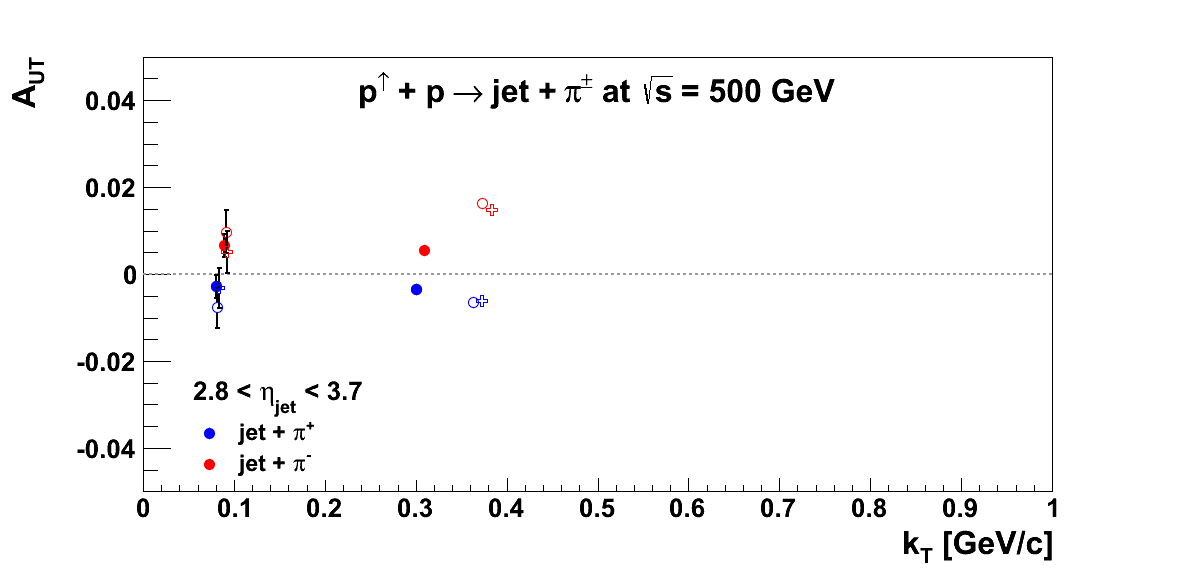
In Fig. 5 I have enforced a minimum ΔR requirement on the distance in η-φ space between the hadron and the jet/parton axis. One can see, again, the dilution of the asymmetry is still strong for detector jets.
- drach09's blog
- Login or register to post comments
